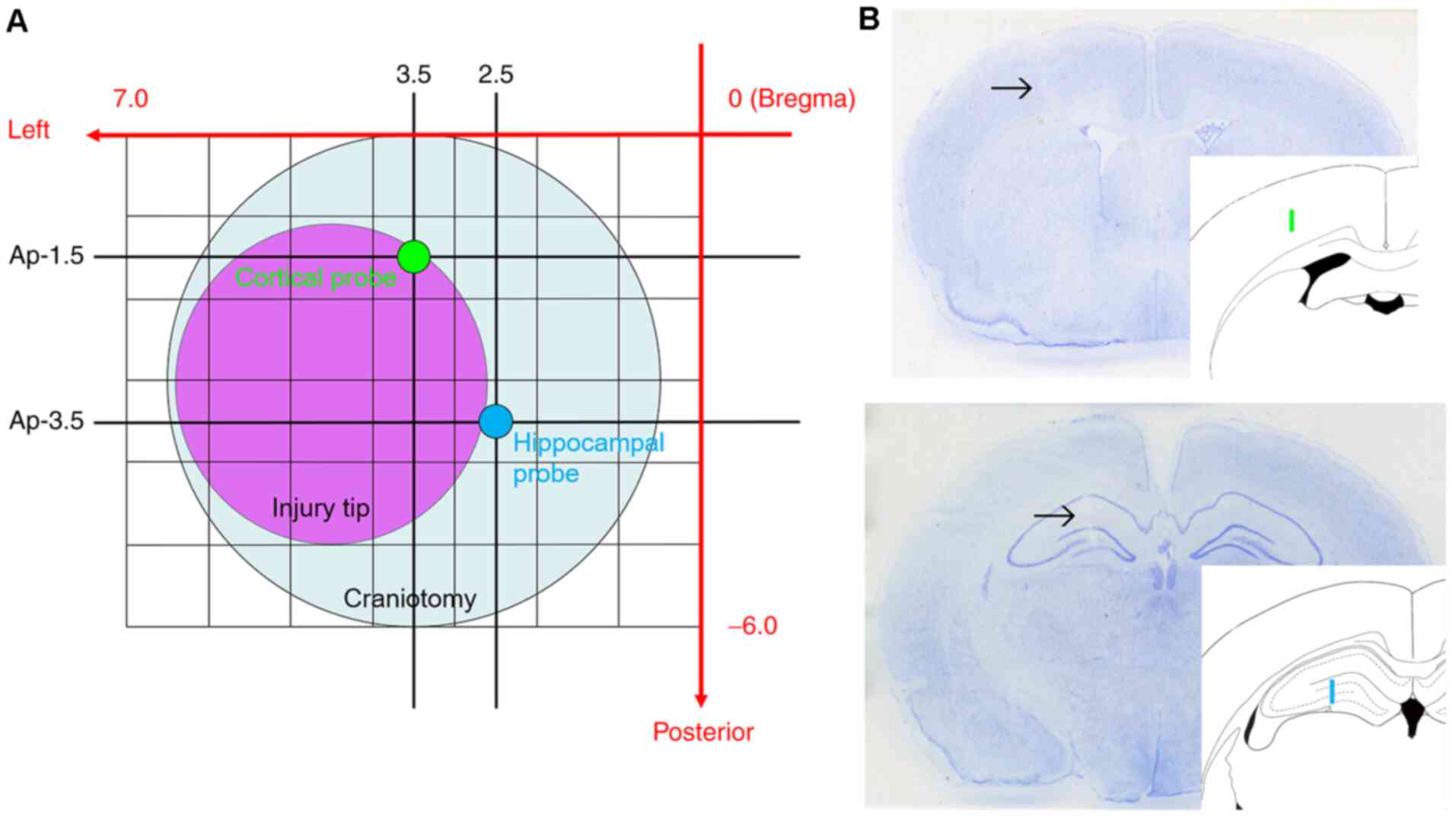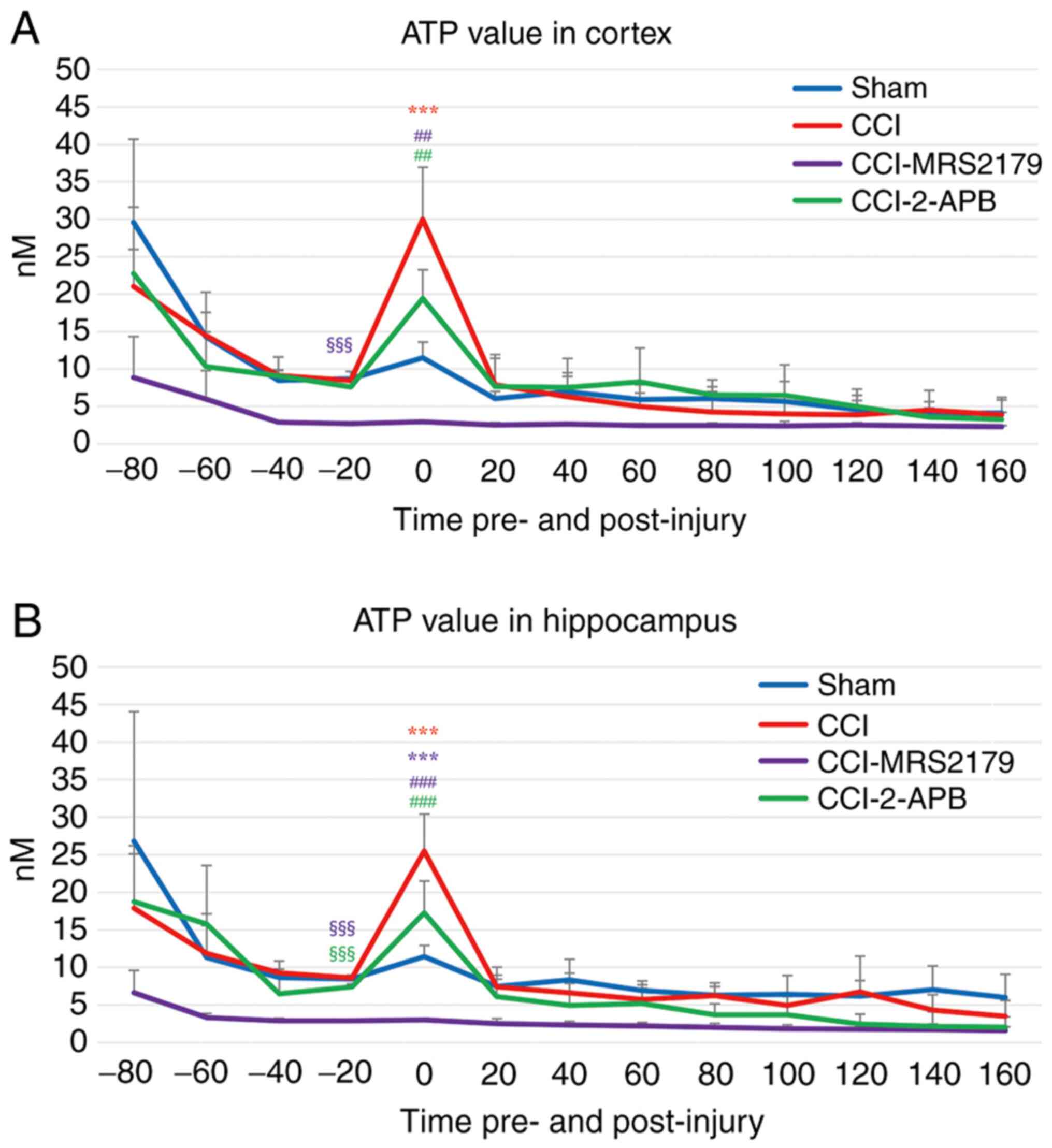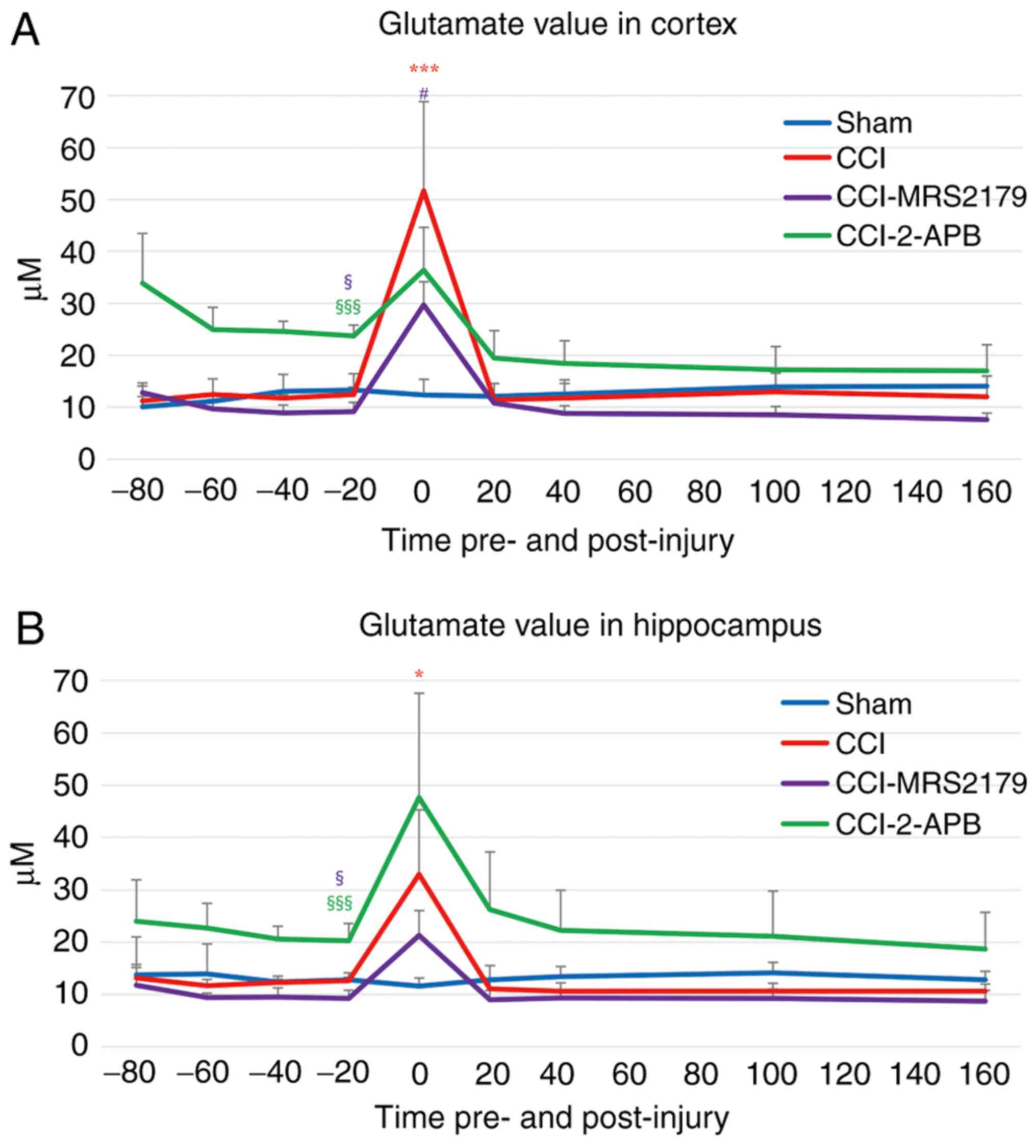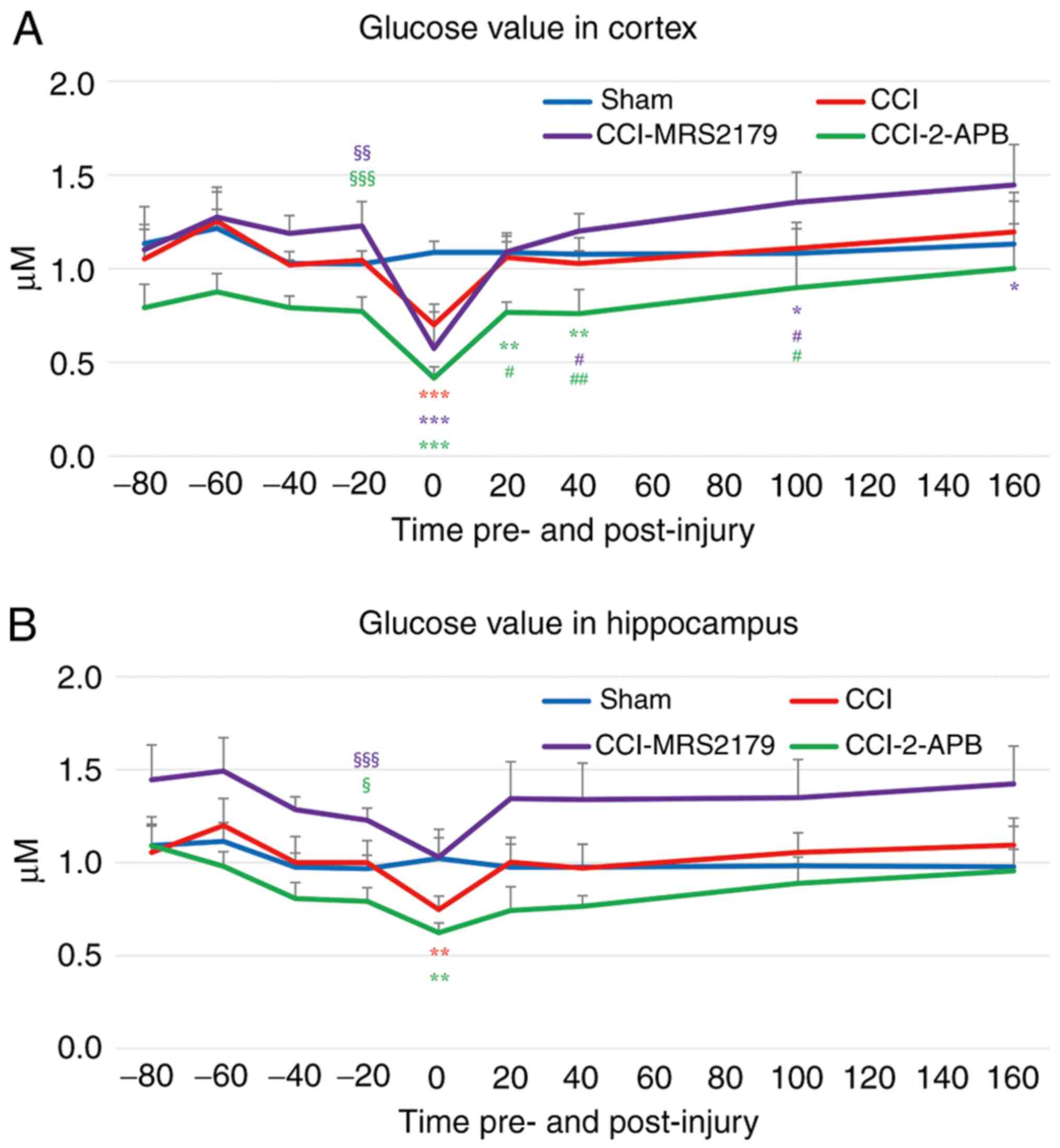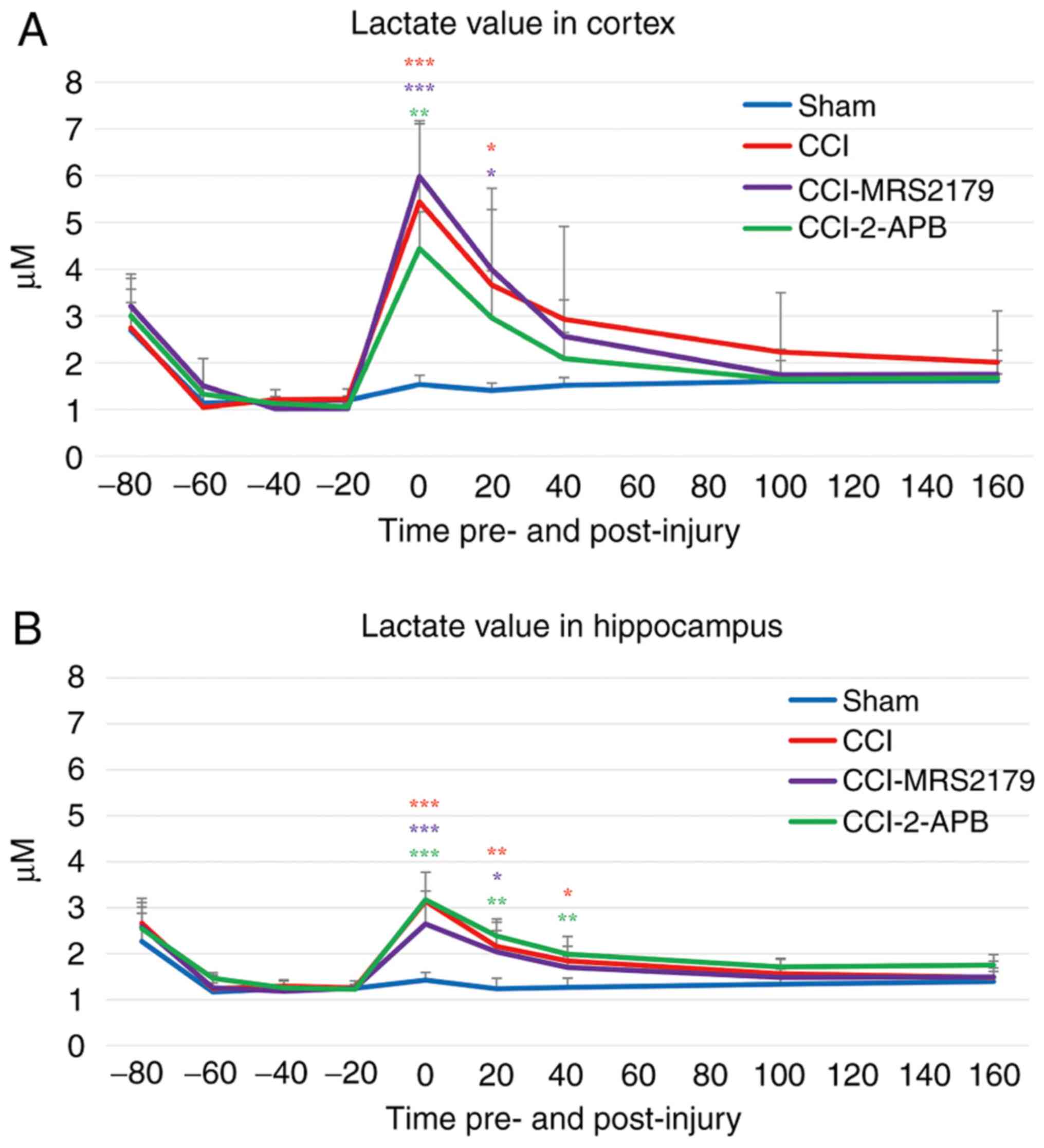|
1
|
Bazargani N and Attwell D: Amines,
astrocytes, and arousal. Neuron. 94:228–231. 2017.PubMed/NCBI View Article : Google Scholar
|
|
2
|
Harada K, Kamiya T and Tsuboi T:
Gliotransmitter release from astrocytes: Functional, developmental,
and pathological implications in the brain. Front Neurosci.
9(499)2015.PubMed/NCBI View Article : Google Scholar
|
|
3
|
De Pittà M, Brunel N and Volterra A:
Astrocytes: Orchestrating synaptic plasticity? Neuroscience.
323:43–61. 2016.PubMed/NCBI View Article : Google Scholar
|
|
4
|
Lalo U, Bogdanov A and Pankratov Y: Age-
and experience-related plasticity of ATP-mediated signaling in the
neocortex. Front Cell Neurosci. 13(242)2019.PubMed/NCBI View Article : Google Scholar
|
|
5
|
Schwarz Y, Zhao N, Kirchhoff F and Bruns
D: Astrocytes control synaptic strength by two distinct
v-SNARE-dependent release pathways. Nat Neurosci. 20:1529–1539.
2017.PubMed/NCBI View
Article : Google Scholar
|
|
6
|
Alberini CM, Cruz E, Descalzi G, Bessieres
B and Gao V: Astrocyte glycogen and lactate: New insights into
learning and memory mechanisms. Glia. 66:1244–1262. 2018.PubMed/NCBI View Article : Google Scholar
|
|
7
|
Henneberger C, Papouin T, Oliet SH and
Rusakov DA: Long-term potentiation depends on release of D-serine
from astrocytes. Nature. 463:232–236. 2010.PubMed/NCBI View Article : Google Scholar
|
|
8
|
Cai C, Zambach SA, Fordsmann JC, Lonstrup
M, Thomsen KJ, Jensen AGK and Lauritzen M: In vivo
three-dimensional two-photon microscopy to study conducted vascular
responses by local ATP ejection using a glass micro-pipette. J Vis
Exp. 148:2019.PubMed/NCBI View
Article : Google Scholar
|
|
9
|
Haydon PG and Carmignoto G: Astrocyte
control of synaptic transmission and neurovascular coupling.
Physiol Rev. 86:1009–1031. 2006.PubMed/NCBI View Article : Google Scholar
|
|
10
|
Takano T, Tian GF, Peng W, Lou N, Libionka
W, Han X and Nedergaard M: Astrocyte-mediated control of cerebral
blood flow. Nat Neurosci. 9:260–267. 2006.PubMed/NCBI View
Article : Google Scholar
|
|
11
|
Corps KN, Roth TL and McGavern DB:
Inflammation and neuroprotection in traumatic brain injury. JAMA
Neurol. 72:355–362. 2015.PubMed/NCBI View Article : Google Scholar
|
|
12
|
Davalos D, Grutzendler J, Yang G, Kim JV,
Zuo Y, Jung S, Littman DR, Dustin ML and Gan WB: ATP mediates rapid
microglial response to local brain injury in vivo. Nat Neurosci.
8:752–758. 2005.PubMed/NCBI View
Article : Google Scholar
|
|
13
|
Jassam YN, Izzy S, Whalen M, McGavern DB
and El Khoury J: Neuroimmunology of traumatic brain injury: Time
for a paradigm shift. Neuron. 95:1246–1265. 2017.PubMed/NCBI View Article : Google Scholar
|
|
14
|
Karve IP, Taylor JM and Crack PJ: The
contribution of astrocytes and microglia to traumatic brain injury.
Br J Pharmacol. 173:692–702. 2016.PubMed/NCBI View Article : Google Scholar
|
|
15
|
Koizumi S, Shigemoto-Mogami Y, Nasu-Tada
K, Shinozaki Y, Ohsawa K, Tsuda M, Joshi BV, Jacobson KA, Kohsaka S
and Inoue K: UDP acting at P2Y6 receptors is a mediator of
microglial phagocytosis. Nature. 446:1091–1095. 2007.PubMed/NCBI View Article : Google Scholar
|
|
16
|
Haynes SE, Hollopeter G, Yang G, Kurpius
D, Dailey ME, Gan WB and Julius D: The P2Y12 receptor regulates
microglial activation by extracellular nucleotides. Nat Neurosci.
9:1512–1519. 2006.PubMed/NCBI View
Article : Google Scholar
|
|
17
|
Winkler U, Seim P, Enzbrenner Y, Köhler S,
Sicker M and Hirrlinger J: Activity-dependent modulation of
intracellular ATP in cultured cortical astrocytes. J Neurosci Res.
95:2172–2181. 2017.PubMed/NCBI View Article : Google Scholar
|
|
18
|
Melani A, Turchi D, Vannucchi MG, Cipriani
S, Gianfriddo M and Pedata F: ATP extracellular concentrations are
increased in the rat striatum during in vivo ischemia. Neurochem
Int. 47:442–448. 2005.PubMed/NCBI View Article : Google Scholar
|
|
19
|
Wang X, Arcuino G, Takano T, Lin J, Peng
WG, Wan P, Li P, Xu Q, Liu QS, Goldman SA and Nedergaard M: P2X7
receptor inhibition improves recovery after spinal cord injury. Nat
Med. 10:821–827. 2004.PubMed/NCBI View
Article : Google Scholar
|
|
20
|
Hinzman JM, Wilson JA, Mazzeo AT, Bullock
MR and Hartings JA: Excitotoxicity and metabolic crisis are
associated with spreading depolarizations in severe traumatic brain
injury patients. J Neurotrauma. 33:1775–1783. 2016.PubMed/NCBI View Article : Google Scholar
|
|
21
|
Moro N, Ghavim SS, Harris NG, Hovda DA and
Sutton RL: Pyruvate treatment attenuates cerebral metabolic
depression and neuronal loss after experimental traumatic brain
injury. Brain Res. 1642:270–277. 2016.PubMed/NCBI View Article : Google Scholar
|
|
22
|
Shijo K, Sutton RL, Ghavim SS, Harris NG
and Bartnik-Olson BL: Metabolic fate of glucose in rats with
traumatic brain injury and pyruvate or glucose treatments: A NMR
spectroscopy study. Neurochem Int. 102:66–78. 2017.PubMed/NCBI View Article : Google Scholar
|
|
23
|
Taylor AN, Tio DL, Paydar A and Sutton RL:
Sex differences in thermal, stress, and inflammatory responses to
minocycline administration in rats with traumatic brain injury. J
Neurotrauma. 35:630–638. 2018.PubMed/NCBI View Article : Google Scholar
|
|
24
|
Kawamura M, Gachet C, Inoue K and Kato F:
Direct excitation of inhibitory interneurons by extracellular ATP
mediated by P2Y1 receptors in the hippocampal slice. J Neurosci.
24:10835–10845. 2004.PubMed/NCBI View Article : Google Scholar
|
|
25
|
Bowser DN and Khakh BS: Vesicular ATP is
the predominant cause of intercellular calcium waves in astrocytes.
J Gen Physiol. 129:485–491. 2007.PubMed/NCBI View Article : Google Scholar
|
|
26
|
Heinke B and Sandkuhler J: Group I
metabotropic glutamate receptor-induced Ca(2+)-gradients in rat
superficial spinal dorsal horn neurons. Neuropharmacology.
52:1015–1023. 2007.PubMed/NCBI View Article : Google Scholar
|
|
27
|
Singaravelu K, Lohr C and Deitmer JW:
Regulation of store-operated calcium entry by calcium-independent
phospholipase A2 in rat cerebellar astrocytes. J Neurosci.
26:9579–9592. 2006.PubMed/NCBI View Article : Google Scholar
|
|
28
|
Fields RD: Nonsynaptic and nonvesicular
ATP release from neurons and relevance to neuron-glia signaling.
Semin Cell Dev Biol. 22:214–219. 2011.PubMed/NCBI View Article : Google Scholar
|
|
29
|
Illes P, Burnstock G and Tang Y:
Astroglia-derived ATP modulates CNS neuronal circuits. Trends
Neurosci. 42:885–898. 2019.PubMed/NCBI View Article : Google Scholar
|
|
30
|
Loiola EC and Ventura AL: Release of ATP
from avian Müller glia cells in culture. Neurochem Int. 58:414–422.
2011.PubMed/NCBI View Article : Google Scholar
|
|
31
|
Muller MS and Taylor CW: ATP evokes
Ca2+ signals in cultured foetal human cortical
astrocytes entirely through G protein-coupled P2Y receptors. J
Neurochem. 142:876–885. 2017.PubMed/NCBI View Article : Google Scholar
|
|
32
|
Molnar T, Dobolyi A, Nyitrai G, Barabas P,
Heja L, Emri Z, Palkovits M and Kardos J: Calcium signals in the
nucleus accumbens: Activation of astrocytes by ATP and succinate.
BMC Neurosci. 12(96)2011.PubMed/NCBI View Article : Google Scholar
|
|
33
|
Svobodova I, Bhattaracharya A, Ivetic M,
Bendova Z and Zemkova H: Circadian ATP release in organotypic
cultures of the rat suprachiasmatic nucleus is dependent on P2X7
and P2Y receptors. Front Pharmacol. 9(192)2018.PubMed/NCBI View Article : Google Scholar
|
|
34
|
Guo H, Liu ZQ, Zhou H, Wang ZL, Tao YH and
Tong Y: P2Y1 receptor antagonists mitigate oxygen and glucose
deprivationinduced astrocyte injury. Mol Med Rep. 17:1819–1824.
2018.PubMed/NCBI View Article : Google Scholar
|
|
35
|
Koss DJ, Riedel G and Platt B:
Intracellular Ca2+ stores modulate SOCCs and NMDA
receptors via tyrosine kinases in rat hippocampal neurons. Cell
Calcium. 46:39–48. 2009.PubMed/NCBI View Article : Google Scholar
|
|
36
|
Papanikolaou M, Lewis A and Butt AM:
Store-operated calcium entry is essential for glial calcium
signalling in CNS white matter. Brain Struct Funct. 222:2993–3005.
2017.PubMed/NCBI View Article : Google Scholar
|
|
37
|
Koizumi S, Fujishita K, Tsuda M,
Shigemoto-Mogami Y and Inoue K: Dynamic inhibition of excitatory
synaptic transmission by astrocyte-derived ATP in hippocampal
cultures. Proc Natl Acad Sci USA. 100:11023–11028. 2003.PubMed/NCBI View Article : Google Scholar
|
|
38
|
Diniz C, Rodrigues M, Casarotto PC,
Pereira VS, Crestani CC and Joca SRL: Monoamine involvement in the
antidepressant-like effect induced by P2 blockade. Brain Res.
1676:19–27. 2017.PubMed/NCBI View Article : Google Scholar
|
|
39
|
Asadollahi M and Simani L: The diagnostic
value of serum UCHL-1 and S100-B levels in differentiate epileptic
seizures from psychogenic attacks. Brain Res. 1704:11–15.
2019.PubMed/NCBI View Article : Google Scholar
|
|
40
|
Lerchundi R, Huang N and Rose CR:
Quantitative imaging of changes in astrocytic and neuronal
adenosine triphosphate using two different variants of ATeam. Front
Cell Neurosci. 14(80)2020.PubMed/NCBI View Article : Google Scholar
|
|
41
|
Burda JE, Bernstein AM and Sofroniew MV:
Astrocyte roles in traumatic brain injury. Exp Neurol. 275:305–315.
2016.PubMed/NCBI View Article : Google Scholar
|
|
42
|
Wellmann M, Alvarez-Ferradas C, Maturana
CJ, Saez JC and Bonansco C: Astroglial Ca2+-dependent
hyperexcitability requires P2Y1 purinergic receptors and
pannexin-1 channel activation in a chronic model of epilepsy. Front
Cell Neurosci. 12(446)2018.PubMed/NCBI View Article : Google Scholar
|
|
43
|
Sakuragi S, Niwa F, Oda Y, Mikoshiba K and
Bannai H: Astroglial Ca2+ signaling is generated by the
coordination of IP3R and store-operated Ca2+
channels. Biochem Biophys Res Commun. 486:879–885. 2017.PubMed/NCBI View Article : Google Scholar
|
|
44
|
Li JH, Zhao ST, Wu CY, Cao X, Peng MR, Li
SJ, Liu XA and Gao TM: Store-operated Ca2+ channels
blockers inhibit lipopolysaccharide induced astrocyte activation.
Neurochem Res. 38:2216–2226. 2013.PubMed/NCBI View Article : Google Scholar
|
|
45
|
Charles AC, Dirksen ER, Merrill JE and
Sanderson MJ: Mechanisms of intercellular calcium signaling in
glial cells studied with dantrolene and thapsigargin. Glia.
7:134–145. 1993.PubMed/NCBI View Article : Google Scholar
|
|
46
|
Obrenovitch TP and Urenjak J: Is high
extracellular glutamate the key to excitotoxicity in traumatic
brain injury? J Neurotrauma. 14:677–698. 1997.PubMed/NCBI View Article : Google Scholar
|
|
47
|
Jourdain P, Bergersen LH, Bhaukaurally K,
Bezzi P, Santello M, Domercq M, Matute C, Tonello F, Gundersen V
and Volterra A: Glutamate exocytosis from astrocytes controls
synaptic strength. Nat Neurosci. 10:331–339. 2007.PubMed/NCBI View Article : Google Scholar
|
|
48
|
Parri R and Crunelli V: Astrocytes target
presynaptic NMDA receptors to give synapses a boost. Nat Neurosci.
10:271–273. 2007.PubMed/NCBI View Article : Google Scholar
|
|
49
|
Rose CR, Felix L, Zeug A, Dietrich D,
Reiner A and Henneberger C: Astroglial glutamate signaling and
uptake in the hippocampus. Front Mol Neurosci.
10(451)2017.PubMed/NCBI View Article : Google Scholar
|
|
50
|
Dorsett CR, McGuire JL, DePasquale EA,
Gardner AE, Floyd CL and McCullumsmith RE: Glutamate
neurotransmission in rodent models of traumatic brain injury. J
Neurotrauma. 34:263–272. 2017.PubMed/NCBI View Article : Google Scholar
|
|
51
|
Gonzalez-Sanchez P, Del Arco A, Esteban JA
and Satrustegui J: Store-operated calcium entry is required for
mGluR-dependent long term depression in cortical neurons. Front
Cell Neurosci. 11(363)2017.PubMed/NCBI View Article : Google Scholar
|
|
52
|
Carpenter KL, Jalloh I and Hutchinson PJ:
Glycolysis and the significance of lactate in traumatic brain
injury. Front Neurosci. 8(112)2015.PubMed/NCBI View Article : Google Scholar
|
|
53
|
Zeiler FA, Thelin EP, Helmy A, Czosnyka M,
Hutchinson PJA and Menon DK: A systematic review of cerebral
microdialysis and outcomes in TBI: Relationships to patient
functional outcome, neurophysiologic measures, and tissue outcome.
Acta Neurochir (Wien). 159:2245–2273. 2017.PubMed/NCBI View Article : Google Scholar
|
|
54
|
Jones DA, Ros J, Landolt H, Fillenz M and
Boutelle MG: Dynamic changes in glucose and lactate in the cortex
of the freely moving rat monitored using microdialysis. J
Neurochem. 75:1703–1708. 2000.PubMed/NCBI View Article : Google Scholar
|
|
55
|
Clausen F, Hillered L and Gustafsson J:
Cerebral glucose metabolism after traumatic brain injury in the rat
studied by 13C-glucose and microdialysis. Acta Neurochir (Wien).
153:653–658. 2011.PubMed/NCBI View Article : Google Scholar
|
|
56
|
Prebil M, Chowdhury HH, Zorec R and Kreft
M: Changes in cytosolic glucose level in ATP stimulated live
astrocytes. Biochem Biophys Res Commun. 405:308–313.
2011.PubMed/NCBI View Article : Google Scholar
|
|
57
|
Tanaka M, Kawahara K, Kosugi T, Yamada T
and Mioka T: Changes in the spontaneous calcium oscillations for
the development of the preconditioning-induced ischemic tolerance
in neuron/astrocyte co-culture. Neurochem Res. 32:988–1001.
2007.PubMed/NCBI View Article : Google Scholar
|
|
58
|
Xu Z, Xu W, Song Y, Zhang B, Li F and Liu
Y: Blockade of store-operated calcium entry alleviates high
glucose-induced neurotoxicity via inhibiting apoptosis in rat
neurons. Chem Biol Interact. 254:63–72. 2016.PubMed/NCBI View Article : Google Scholar
|
|
59
|
Olianas MC, Dedoni S and Onali P:
Involvement of store-operated Ca(2+) entry in activation of
AMP-activated protein kinase and stimulation of glucose uptake by
M3 muscarinic acetylcholine receptors in human neuroblastoma cells.
Biochim Biophys Acta. 1843:3004–3017. 2014.PubMed/NCBI View Article : Google Scholar
|















